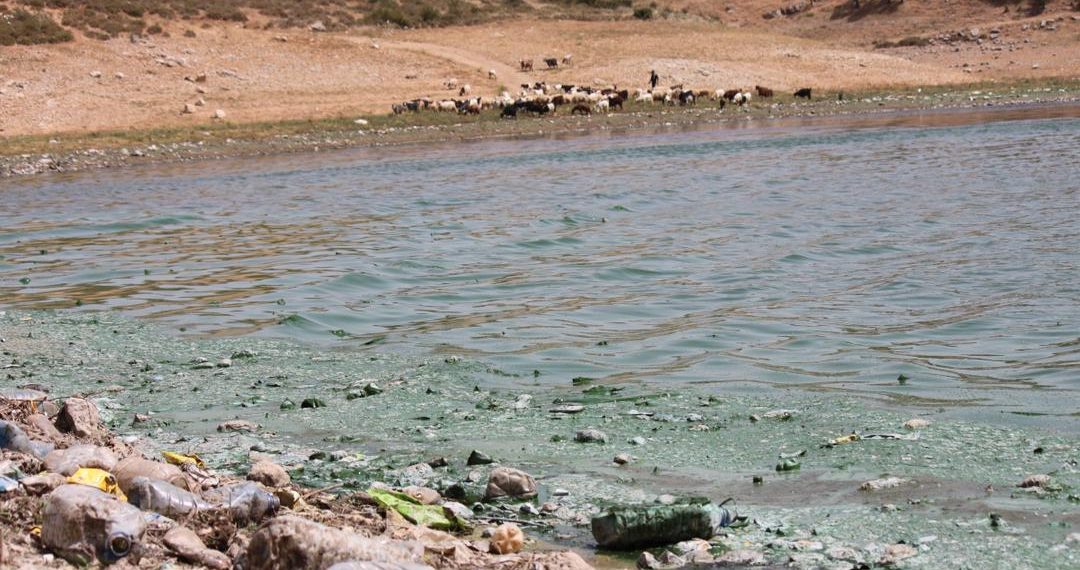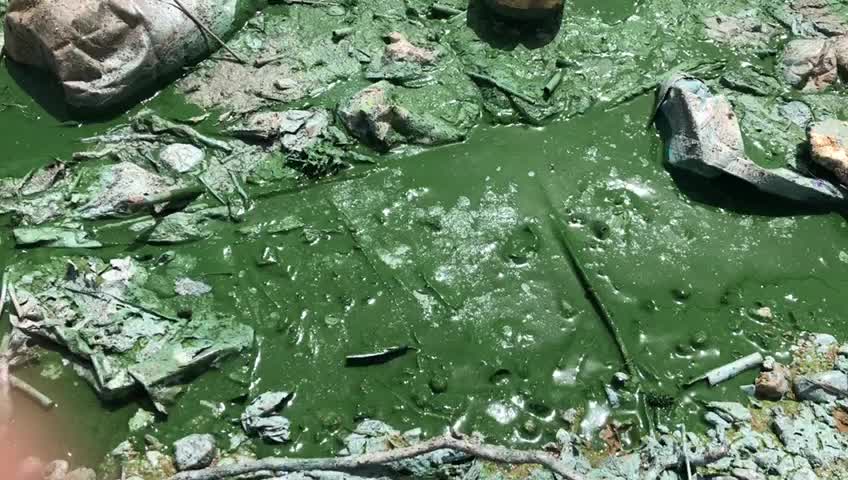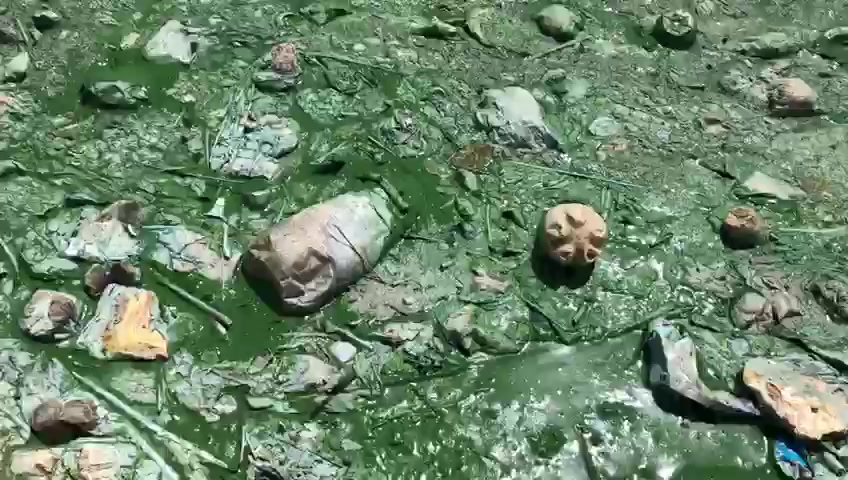
SPNL Warns: Be aware of cyanobacteria blooms this summer
As summer approaches and more grazing and fishing activities around Litani river begin amid the COVID-19 outbreak, the Society for the Protection of Nature in Lebanon (SPNL) and Litani River Authority (LRA) reminds people heading outdoors to be on the look-out for cyanobacteria blooms that can produce toxins when recreating in Litani river, and Qaraoun Lake.
Within the framework of the joint cooperation agreement between SPNL and LRA, experts of SPNL’s Fish and Wildlife Unit (FWU) toured the Qaraoun Lake and the Litani River. During the tour, the first signs of a concentrated and dense spread of cyanobacteria bloom were observed at the entrance to the lake, from the direction of Saghbine village.
Unfortunately, several herds of sheep and goats have been observed grazing near the river and the lake and drinking from their waters, despite SPNL’s ongoing warnings and despite the letter sent by the LRA on May 19, 2021, to the ministers of Economy and Trade, Interior and Municipalities, Health, and Agriculture in which it requests them to direct the municipalities adjacent to the Quraoun Lake and the Litani River to prohibit herds of livestock from drinking from the waters of Qaraoun Lake and from grazing next to it.

Again, it must be pointed out that in addition to their pollution with bacteria, chemicals, and heavy metals, the river and the lake have also started to be contaminated with cyanobacteria that secrete cyanotoxin toxins that can kill livestock and damage their internal organs, especially their liver and kidneys, and these toxins may be concentrated in the meat of grazing animals and in their milk and dairy products.
We call on all concerned to assume their responsibilities to protect the Lebanese citizen and to take care of both human and animal health, and to work immediately to address the core of the problem, which is the extreme pollution of the Litani and Quraoun, Lebanon’s most important river and lake.

Cyanobacteria are bacteria found in all water, worldwide. Under the right conditions—when weather, sunlight, water temperature, nutrients and water chemistry are ideal—cyanobacteria can multiply into blooms in any water body. Many blooms are harmless, but some can produce cyanotoxins that make people and animals sick.
Exposure to cyanotoxins occurs when water is swallowed while swimming, or when water droplets are inhaled during high-speed activities such as water-skiing or wakeboarding. Symptoms of exposure to cyanotoxins include diarrhea, cramps, vomiting, numbness, dizziness and fainting. Although cyanotoxins are not absorbed through the skin, people with sensitive skin can develop a red, raised rash when wading, playing, or swimming in or around a bloom.
Children and pets are particularly sensitive to illness because of their size and activity levels. Dogs can get extremely ill and even die within minutes to hours of exposure to cyanotoxins by drinking the water, licking their fur, or eating the toxins from floating mats or dried crust along the shore. Similar to dogs, livestock and wildlife can become ill and die after drinking from waterbodies, troughs or other sources of drinking water affected by blooms and potential toxins.